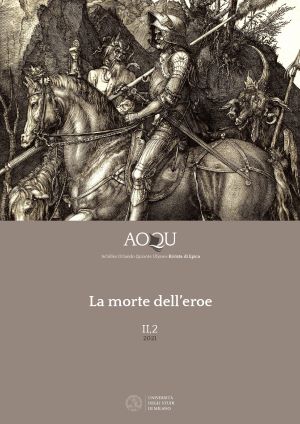Abstract
In the Japanese epic tradition, as well as in the stories based on historical events and handed down from generation to generation, the figures of heroes whose apotheosis coincides with death, sometimes self-inflicted through the practice of seppuku, the ritual cutting of the belly, stand out. This is in part linked to the main religions and doctrines that have formed Japanese culture, such as Shinto, Confucianism and Buddhism, but at the root of the affection towards figures we can find the intertwining of a sense of emotion for the transience of life and beauty, together with the recognition of a purity of purpose. Fidelity to a cause or an ideal is measured not by the profit that one derives from it, but by the ability to adhere to it with the totality of one’s own being. The figure of the warrior hero, who is constantly exposed to the risk of death, becomes just like the cherry blossom, the emblem of the ability to pass through life without spasmodically clinging to it, and at the same time without fleeing or betraying it.

